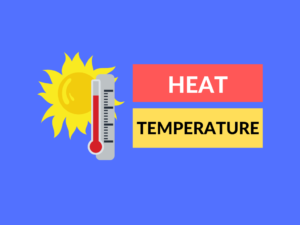Cold-Blooded vs. Warm-Blooded Animals: A Comparative Analysis
What are Cold-Blooded Animals?
Cold-blooded animals, also known as ectothermic animals, are organisms that rely on external sources of heat to regulate their body temperature. Unlike warm-blooded animals, they do not have the ability to generate heat internally. Instead, their body temperature varies with the temperature of their environment.
Examples of Cold-Blooded Animals
Some common examples of cold-blooded animals include reptiles (such as snakes, lizards, and turtles), amphibians (such as frogs and salamanders), fish, and certain invertebrates like insects and crustaceans.
Uses of Cold-Blooded Animals
Cold-blooded animals have adapted to their unique physiology and play important ecological roles. They are efficient at utilizing energy as they require less food than warm-blooded animals. They thrive in diverse habitats and often rely on behavioral mechanisms to regulate their body temperatures, such as basking in the sun or seeking shade.
What are Warm-Blooded Animals?
Warm-blooded animals, also known as endothermic animals, have the ability to regulate their body temperature internally. They generate heat through metabolic processes within their bodies, allowing them to maintain a relatively stable body temperature regardless of the external environment.
Examples of Warm-Blooded Animals
Some well-known examples of warm-blooded animals include mammals (such as humans, dogs, and cats) and birds. These animals are capable of maintaining a constant body temperature even in extreme environmental conditions.
Uses of Warm-Blooded Animals
Being warm-blooded allows animals to be highly active and adapt to various climates. It enables them to maintain a consistent level of internal functioning, which is crucial for survival in challenging environments. The ability to regulate body temperature internally also supports their high energy demands.
Differences Between Cold-Blooded and Warm-Blooded Animals
| Difference Area | Cold-Blooded Animals | Warm-Blooded Animals |
|---|---|---|
| Metabolism | Low or variable metabolism | High and relatively constant metabolism |
| Thermoregulation | Rely on external sources for temperature regulation | Can internally regulate body temperature |
| Energy Efficiency | Require less food due to lower metabolic rates | Require more food to sustain their high metabolism |
| Activity Levels | Less active during cooler periods, as their body temperature decreases | Highly active regardless of external temperature |
| Survival in Different Climates | Can withstand extreme temperatures efficiently | Can adapt to a wider range of climates due to internal temperature regulation |
| Reproduction | Often rely on external factors, such as temperature, to influence reproductive processes | Do not depend on external factors for reproductive processes |
| Evolutionary History | Cold-bloodedness is an ancestral trait which dates back millions of years | Warm-bloodedness evolved independently in mammals and birds, allowing for greater adaptability |
| Regulation of Oxygen Consumption | Oxygen consumption varies with body temperature | Oxygen consumption remains relatively constant |
| Distribution | Found in a wide range of habitats, including aquatic and terrestrial | Found in almost all habitats, including extreme environments like polar regions |
| Resilience to Environmental Changes | Prone to fluctuations in body temperature, making them more vulnerable to sudden changes in the environment | Less affected by sudden environmental changes due to internal temperature regulation |
Conclusion
In summary, cold-blooded and warm-blooded animals differ significantly in terms of their metabolic rates, ability to regulate body temperature, energy requirements, activity levels, and adaptations to different climates. While cold-blooded animals rely on external sources of heat and exhibit slower metabolic rates, warm-blooded animals have internal temperature regulation and higher energy demands. These differences have allowed each group to thrive in specific ecological niches.
People Also Ask:
1. Are humans warm-blooded animals?
Yes, humans are warm-blooded animals. Our bodies maintain a relatively constant internal temperature regardless of the external environment.
2. Do all reptiles belong to the category of cold-blooded animals?
Yes, reptiles are cold-blooded animals. They rely on external heat sources to regulate their body temperature.
3. What advantages do warm-blooded animals have over cold-blooded animals?
Warm-blooded animals have the advantage of maintaining a stable internal temperature, allowing them to remain active in colder environments and adapt to a wider range of climates.
4. Can cold-blooded animals become warm-blooded?
No, cold-blooded animals cannot become warm-blooded. Warm-bloodedness is a distinct evolutionary trait that is only found in mammals and birds.
5. Are there any exceptions to the classification of animals as cold-blooded or warm-blooded?
While most animals can be categorized as either cold-blooded or warm-blooded, some species exhibit characteristics of both. For example, some species of fish have the ability to regulate their body temperature internally to some extent.


